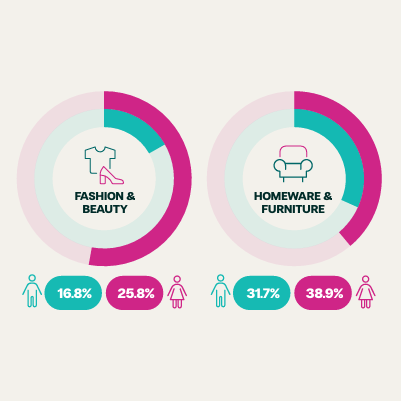What are split payments?

If you’ve eaten at a restaurant with a group of friends, there’s a good chance you’ve taken part in a ‘split payment.’
A split payment is a transaction that involves multiple payment methods, like a debit card, credit card, cash or cheque. It’s a common feature in brick and mortar stores, and can be a useful way to make transactions more affordable to customers.
But the term is often confused with deferred payments like retail finance, which is something very different. In this article, we explain the concept of split payments, deferred payments, and the difference between them.
Split payments
Payments are often split amongst groups of people (like paying for a meal in a restaurant), but they can also be split for an individual as well. For example, a customer may want to pay part-cash, part-card to get rid of the change in their pocket, or split the transaction across several credit cards to avoid exceeding their spending limits. Businesses, too, can split their invoices using multiple payment methods.
Most brick and mortar stores offer this feature via their point-of-sale terminals, but digital businesses are increasingly offering split payments. Think gift cards, vouchers and loyalty cards. Online checkouts allow customers to pay part of their purchase using a closed loop card by entering a code. If the gift card does not cover the full amount, then the rest of the purchase can be paid on a separate debit, credit or other closed-loop card.
Examples of digital split payments
Uber, the taxi turned super-app, allows their users to split the fare on ride shares. Uber customers can decide who owes what, then pay their share using multiple debit or credit cards.
Many neo-banks also offer some form of split payment feature. Monzo, for example, allows customers to split the cost post-purchase using an in-app feature. Similarly, apps like Splitwise make splitting the bill simple by calculating the amount for each member of a group.
What are the benefits of split payments?
Split payments are a win-win for consumers and merchants. Customers can reduce the upfront cost of a transaction, which makes purchases flexible, accessible, and in a sense more affordable. Meanwhile, merchants see their transaction values increase, cart abandonment rates reduce, and it can boost sales too.
Deferred payments
Split payments share many of the same benefits of deferred payments, which give consumers the power to spread the cost of a transaction over weeks, months or years. You can be forgiven for thinking that a deferred payment was a split payment – the two are often confused.
So how do split payments and deferred payments differ?
With deferred payments, like Buy Now, Pay Later (BNPL) and other forms of checkout finance, merchants partner with a third-party platform. This is often the lender, but can also be the technology platform that connects the lender to the merchant.
A consumer chooses deferred payment at the checkout, then enters into a loan agreement with the third-party lender. The lender pays the merchant in full, then takes back the value of the loan (minus a deposit) from the customer.
Meanwhile, the merchant pays the lender a fee of between 2% and 8% of the value of the transaction, though some fees can be as high as 15%.
That may seem steep, but the benefits to merchants outweigh the costs. These include:
Increased conversions
Just like split payments, customers are more likely to buy from merchants offering checkout finance. And with around 70% of consumers abandoning their cart, it’s easy to see why merchants would want to provide it.
Access to a new pool of customers
Reducing the upfront cost makes purchasing easier for a wider range of consumers. The lower the upfront cost, the more consumers will be tempted by the merchant’s products, and thus the more customers the merchant acquires.
Bigger transactions
Customers feel comfortable paying for more items at once with checkout finance. A deferred payment unlocks more capital for the customer by reducing the upfront cost and spreading the value over time. A split payment is not a loan and therefore does not increase the availability of funds for the customer, only the flexibility of using money that is already available.
What’s better: split payments or deferred payments?
Though split and deferred payments seem to have similar benefits, they serve different needs. A crucial difference is that a split payment is completed at the time of the transaction, whereas a deferred payment is spread over time. As we’ve covered, a deferred payment is a loan which increases the availability of a consumer’s disposable income.
If it’s deferred payments you’re looking for, why not check out our retail finance blogs.
Want to learn more about retail finance?
Divido’s latest white paper offers never-before-seen insights into the world of checkout finance. Understand how and why customers are flocking to this form of payment, with real statistics backed up by our survey of British consumers.
Download your free copy here:
Keen to know more?









